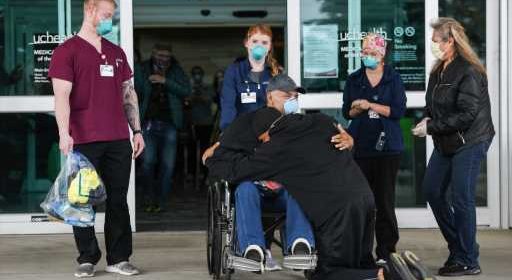Coloradans hospitalized for COVID-19 in summer months were less likely to die than those hospitalized in spring

Coloradans with more severe cases of COVID-19 were far less likely to die if they were hospitalized in July than in March, but there’s not one treatment or other factor that explains the decrease.
A report from the seven largest health systems in Colorado, which treated more than 90% of patients hospitalized in the state, showed about 16% of patients who were hospitalized in April didn’t survive long enough to leave.
By July, only about 9% of those who went to the participating hospitals died there.
It’s impossible to point to one cause for the improvement, because it’s possible those hospitalized over the summer had fewer underlying conditions, and because hospitals tried out multiple drug treatments over those months, said Dr. William Neff, chief medical officer for four of UCHealth’s northern Colorado hospitals. They also learned it was better to avoid putting patients on ventilators when they have low oxygen levels but are functioning well, and that patients who did need to be on a ventilator fared better when laid on their stomachs, he said.
It’s also possible that patients in the summer had been exposed to lower concentrations of the virus, because we’d learned to avoid cramped conditions and wear masks, Neff said. If fewer particles of the virus enter the body, it reduces the odds the virus will multiply out of control, he said.
“We need to be careful about claiming that it’s all because we did one or two things,” he said.
Studies found similar reductions in mortality nationwide, with about 26% of hospitalized patients dying in March, compared to 8% in August, according to NPR. All age groups experienced some improvement, as did people with underlying conditions.
Most age groups saw improvement in Colorado between April and July. The exception was the 50-59 group, whose members were about as likely to die in April and July, and saw a spike in mortality in May. It’s not entirely clear why that group saw more deaths in May, but it may reflect random differences in who got sick that month and what underlying conditions they had, said Julie Lonborg, a spokesperson for the Colorado Hospital Association.
Patients were also more likely to go directly home in the summer than in the spring. About 62% of patients went home in April, but by July, 80% did. Those who didn’t go directly home or die in the hospital were discharged to other facilities, like rehabilitation centers or hospice houses.
The average length of hospitalization also decreased from about 12 days in March to about seven days in July, though older people and those who needed a ventilator stayed longer, on average.
Numbers from August and September haven’t been released yet, but it appears the rate of improvement may have plateaued, Neff said. While steroids cut the risk a patient will die, there’s still no cure for the virus, so it’s important to continue wearing masks and practicing social distancing, he said.
“We all wish there was a magic bullet,” he said. “But for the individual patient that gets sick, we’ve got a lot of better ways to take care of them.”
Subscribe to bi-weekly newsletter to get health news sent straight to your inbox.
Source: Read Full Article
